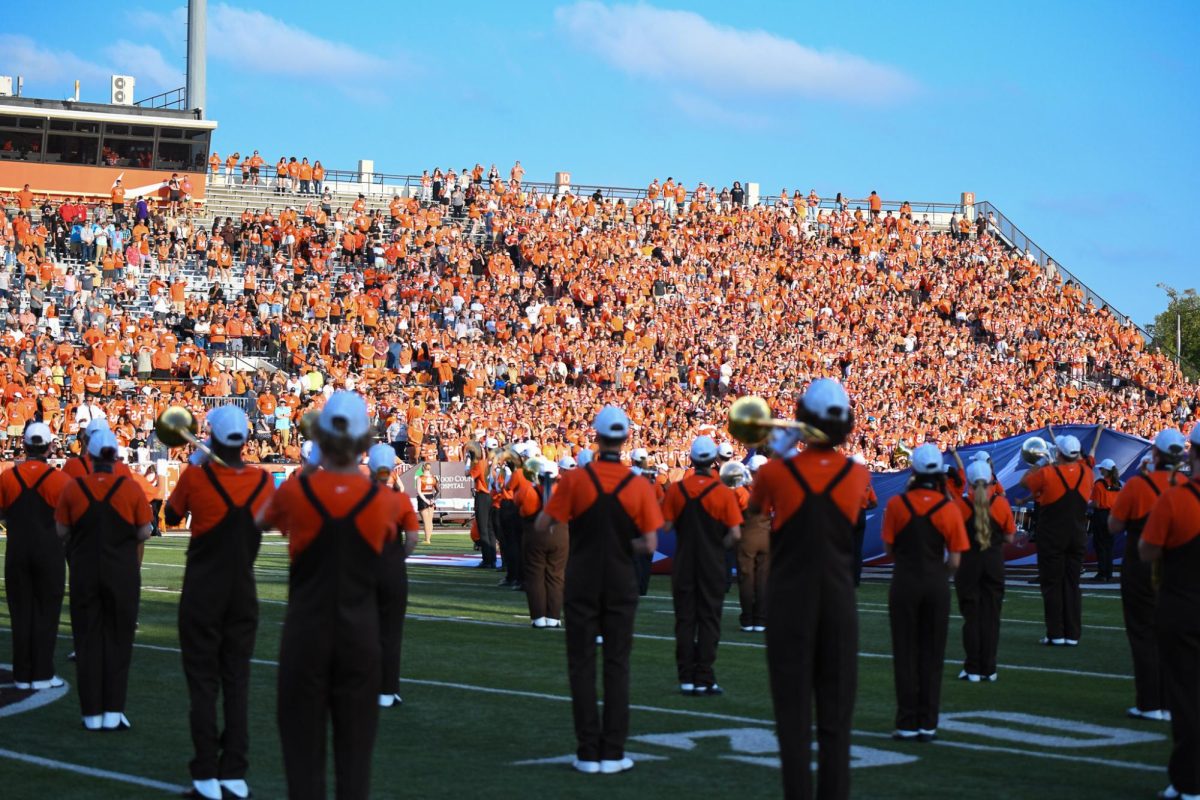A little less than a month ago, an article ran in USA Today about Division 1 football teams having attendance problems that caused a significant amount of buzz around campus. Twelve schools that had an average attendance less than 15,000 were given an ultimatum; get your attendance up 15,000 within the next two seasons or risk having your Division-I status revoked.
Of the 12 schools named, six of them were in the Mid-American Conference, including Bowling Green. So why is it that BG, in addition to Temple, Akron, Buffalo, Kent State and Eastern Michigan, is having such problems getting people to come out to their games?
The main reason is many of these teams have losing records. The six MAC schools combined for 19 wins last year, and it’s no secret that if you don’t win games, people don’t show up.
“I’m not going to lie, the biggest reason for our attendance problems is that we’ve won seven games the last five years,” said Paul Vecchio, spokesman for the University of Buffalo.
Larger schools like Ohio State and Michigan have a strong history, not to mention a large alumni base that can be counted on to continue to attend the games even while the team is struggling. However, MAC schools do not have this luxury, so the on field struggles are often reflected in the stands.
One problem is the proximity to larger schools that have a more storied football history, like Michigan and Ohio State.
“There’s no question about it, the entire state of Ohio is crazy for the Buckeyes,” stated a spokesperson for Kent State University.
It would make sense to have the MAC games at time opposite of when the Buckeyes play, but unfortunately, that is not always possible. Because the times for the Big Ten games are not usually determined until two weeks prior to the game, it is impossible to do this. Hence, there may be a Saturday this fall where the amount of students wearing brown and orange at the Doyt will be outnumbered by the students wearing red and silver back at the dorms.
“It’s unfortunate, but that’s just the nature of college football,” said Bowling Green director of athletic communications, J.D. Campbell.
Many of these schools have made radical changes to improve their figures at the box office. Both Temple and Buffalo hired new head coaches in the off-season, which always creates a buzz.
“We feel that the amount of marketing that we have done behind hiring of coach Gill at Buffalo will generate a fair amount of ticket sales,” Vecchio said.
Kent State initiated a new school sponsored tailgate for this season in hopes of getting more fans in the stands.
Another strategy MAC schools are deploying is scheduling Big Ten opponents at home in order to increase attendance. The thinking is most of the MAC schools are from close enough that a decent number of fans will travel to the game. Kent State played Minnesota earlier this season, and while the Golden Flashes lost 44-0, they won at the box office, with an attendance of 20,126.
Many schools, such as Bowling Green, have experimented with playing games at larger venues, such as the “Clash in Cleveland,” which drew 30,307 fans to Cleveland Browns Stadium.
Although it sounds tough, the ultimatum issued by the NCAA is not as harsh as it sounds. If any of those 12 schools fail to meet attendance requirements for this season, that school has a 10 year window in which to meet the attendance mark. If that school fails to meet the mark for a second year, they will be placed on restrictive status for the following year, meaning that they will lose the opportunity to play in bowl games. Should they fail to meet the attendance requirement during the restrictive status year, they would then lose their Division-I status.
As for the risk of the Bowling Green losing their Division-I status, Falcon fans need not to worry. BG averaged 14,929 fans in 2005, putting us barely under the mark. With the “Clash in Cleveland” counting as a home game, we are currently averaging 22,618 per game. As long as BG students keep coming to games, the Falcons will remain in Division-I.







